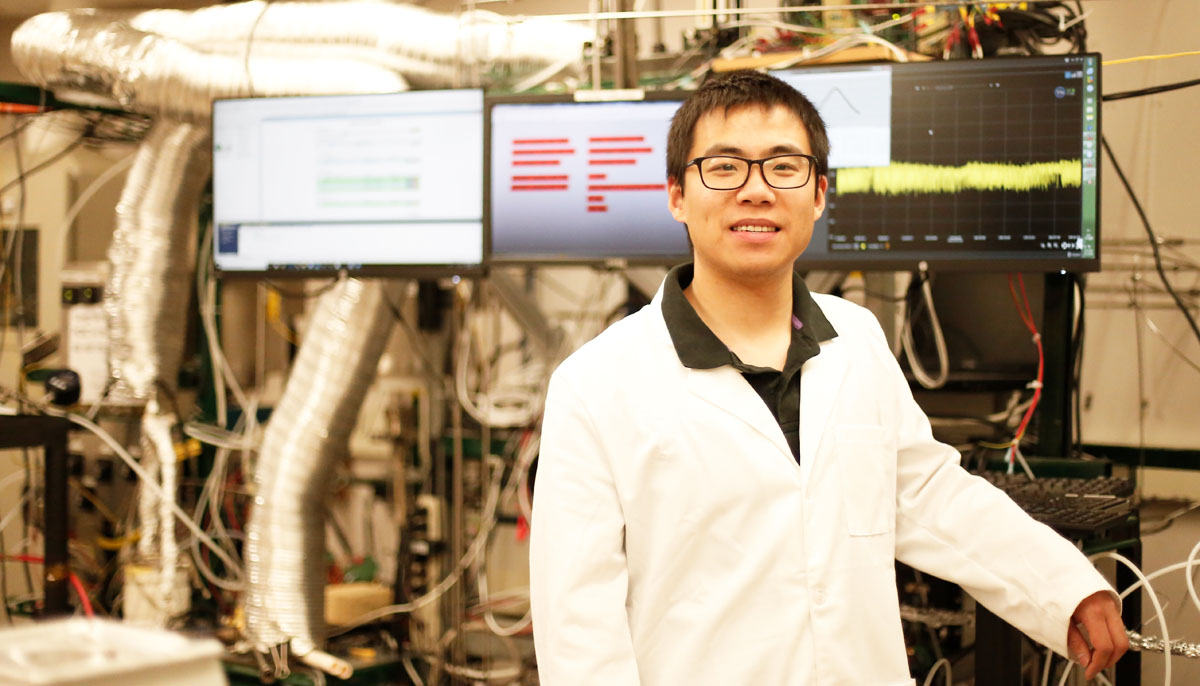NEES News
Breakthrough protonic fuel cell study published in Nature
Protonic ceramic fuel cells could one day be used to power off-the-grid cabins in remote locations, backup generators during natural disasters and more. In the first long-term study of its kind, researchers from the Department of Materials Science Engineering (MSE) at the University of Maryland (UMD) and the Colorado School of Mines have shown that the relatively new class of fuel cells exhibit both the long-term durability and fuel flexibility needed to become a viable commercial alternative to other existing fuel cell technologies. “No one can get hydrogen delivered to their door very easily,” O’Hayre added. “But you can go down the road to the 7-Eleven and pick up a tank of propane.” Protonic ceramics are a relative newcomer in the fuel cell world, the material having only been discovered in Japan in 1980. It wasn’t until the late 1980s and early 1990s, though, that the technology began to gain acceptance, and in just the last eight or so years, researchers have made major inroads in addressing stability issues and how to make the dense membranes necessary to power a device, O’Hayre said. According to O'Hayre, the performance tests conducted at Mines were 10 times longer in duration than any previous effort. For the tests, Duan designed and built a fuel-cell testing system where he could simultaneously test seven cells using different fuels for thousands of hours. The setup required careful monitoring for the better part of two years. “The longest test was 8,000 hours, which is almost a whole year,” Duan said. “The degradation rate of most of the fuel cells was less than 3 percent per 1,000 hours, which meets the requirements of commercial products.” Developing a highly durable fuel cell technology that can directly use natural gas and hydrocarbons is critical when it comes to commercialization, Duan said. Mines researchers are now working with Fuel Cell Energy, a Connecticut-based fuel cell company, to scale up the lab-scale technology and develop a pre-commercial prototype that could deliver the amount of electricity needed to power a RV or remote cabin, with funding from the U.S. Department of Energy’s Advanced Research Projects Agency-Energy (ARPA-E). “Based on our current work and achievements, it is time to collaborate with an industrial partner to make commercial products,” Duan said. “In three years, there will be a 500-watt direct-natural gas PCFC stack developed based on our technology. In less than 10 years, there will be a 1-kilowatt PCFC stack that could serve as a house power supply, the backup power supply for offices or mobile base stations.” Co-authors of the paper include Angelique Jarry of the MSE Department at University of Maryland; Robert Kee, Robert Braun, Neal P. Sullivan, Huayang Zhu, Canan Karakaya and Sandrine Ricote from the Mechanical Engineering Department at Mines; Mines postdoctoral fellow Yachao Chen; Ethan J. Crumlin of Lawrence Berkeley National Laboratory; and David Hook of CoorsTek.
May 9, 2018 Prev Next |












